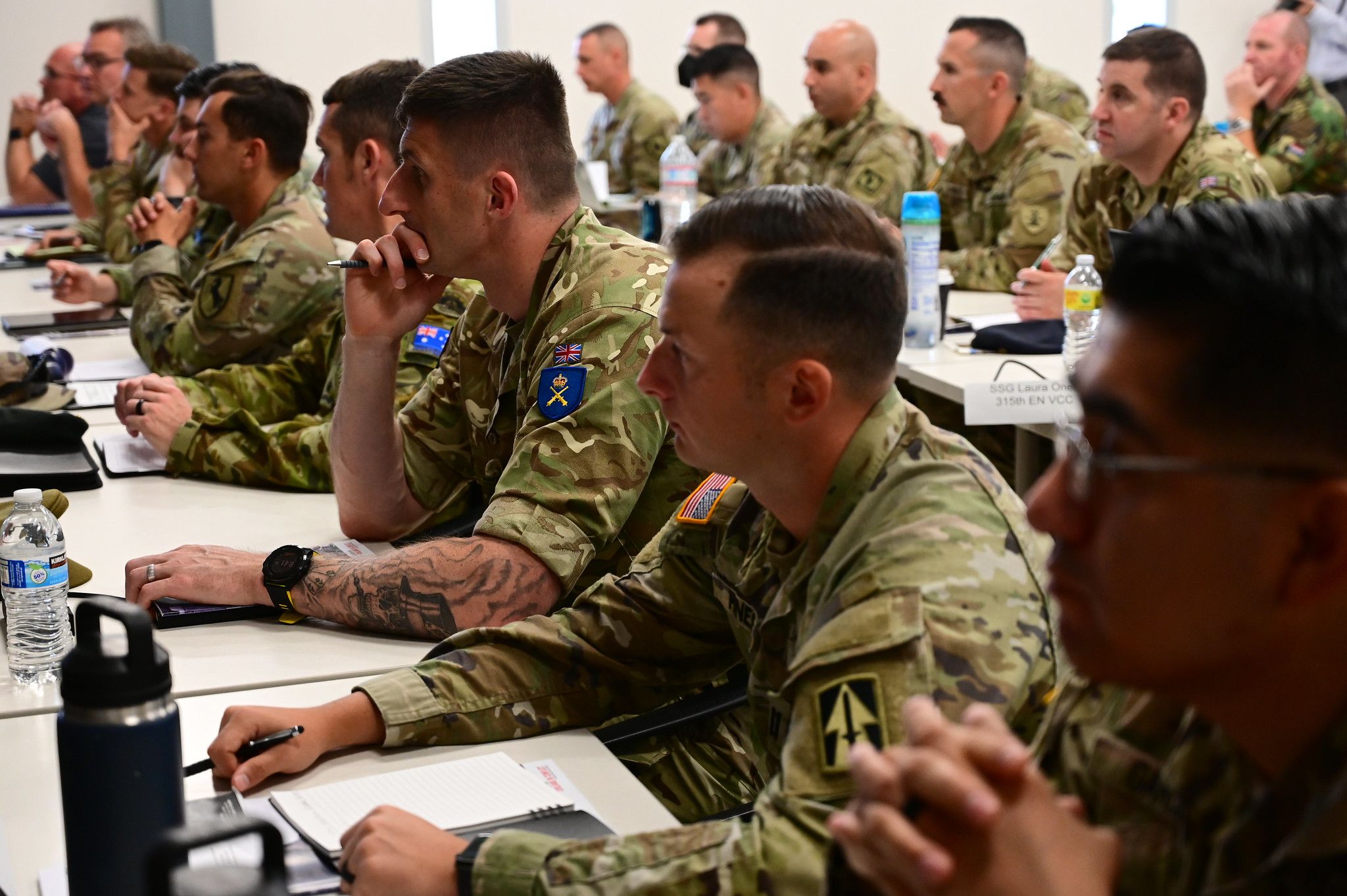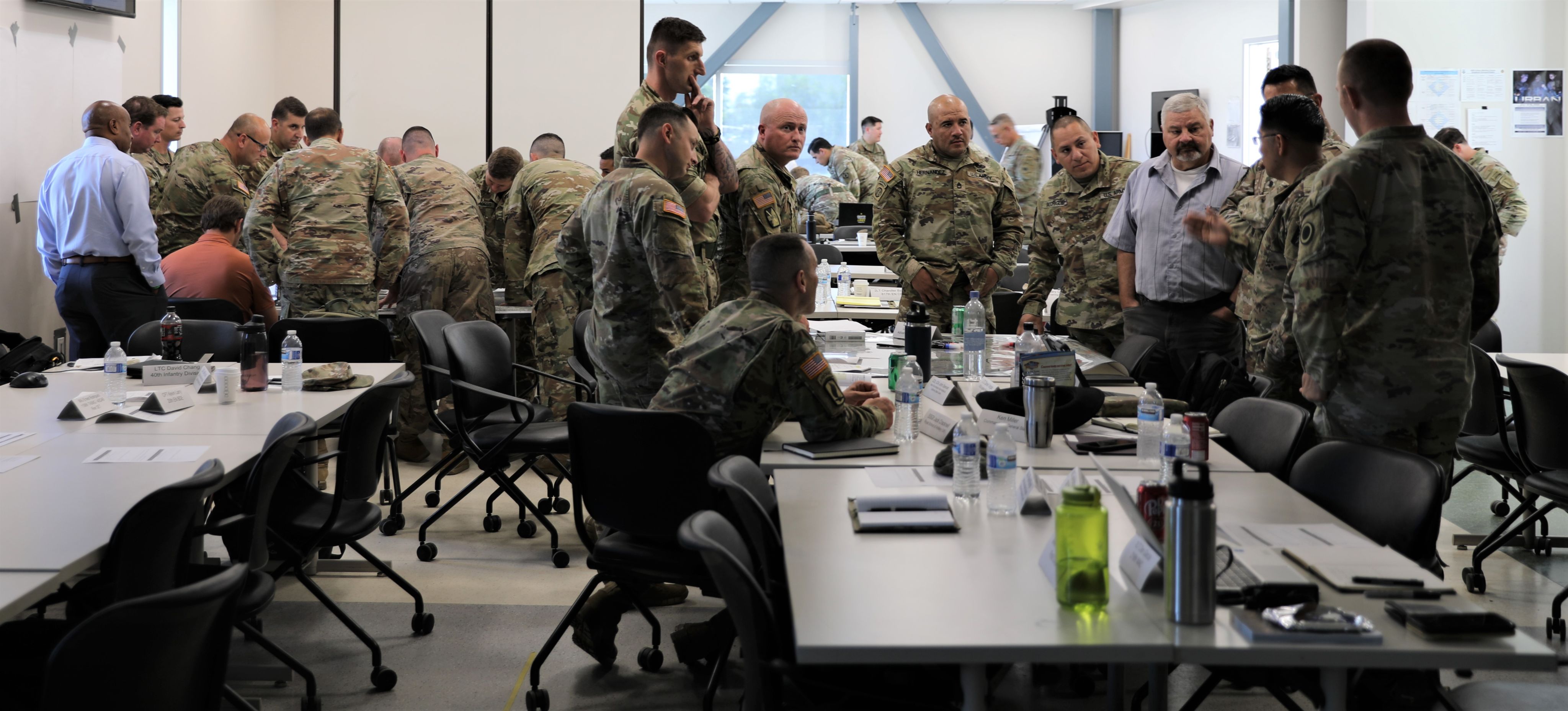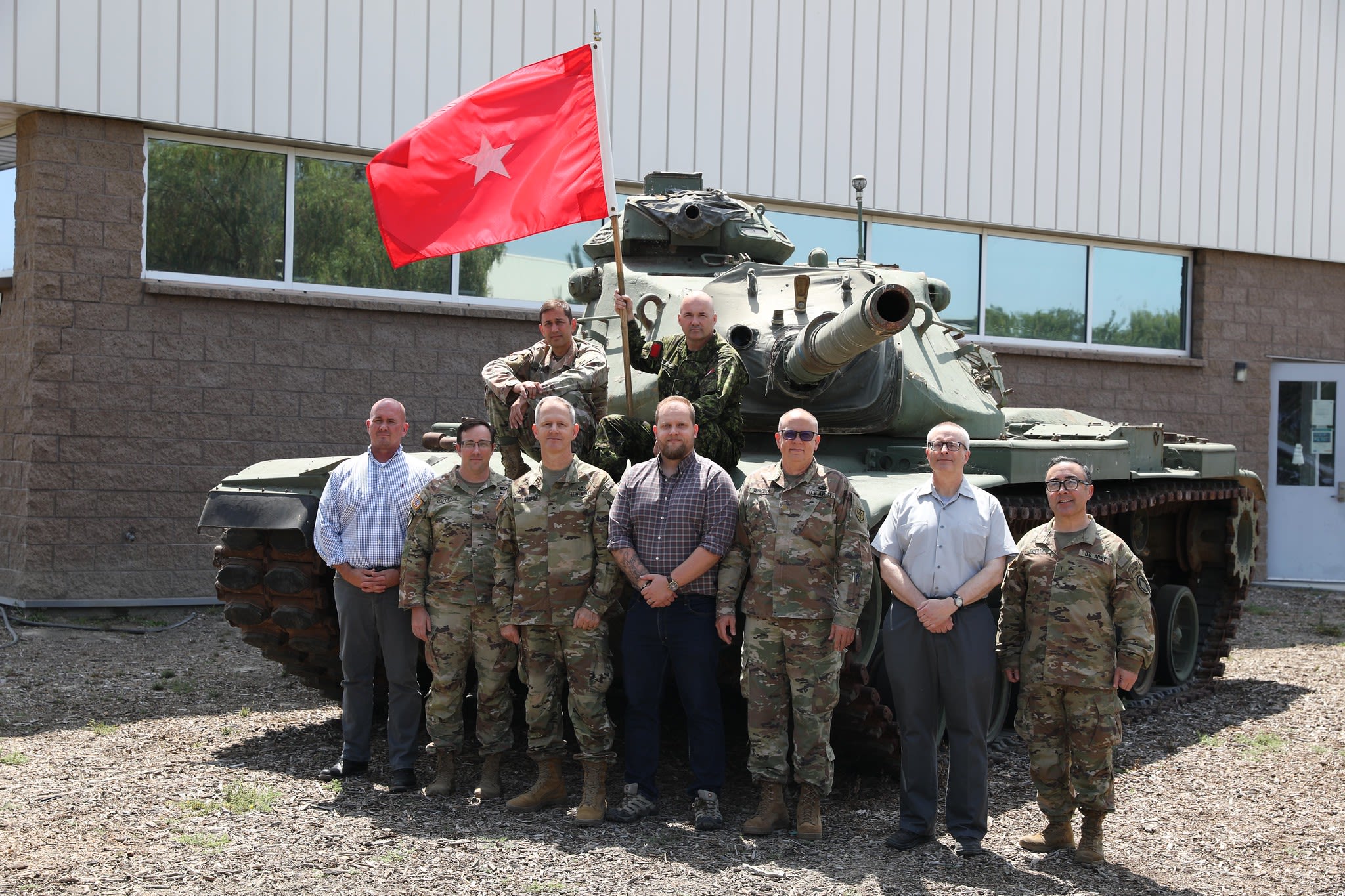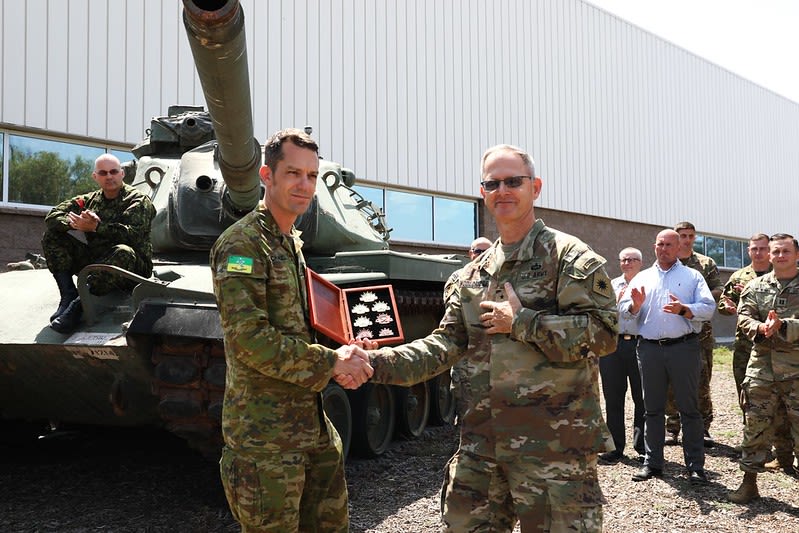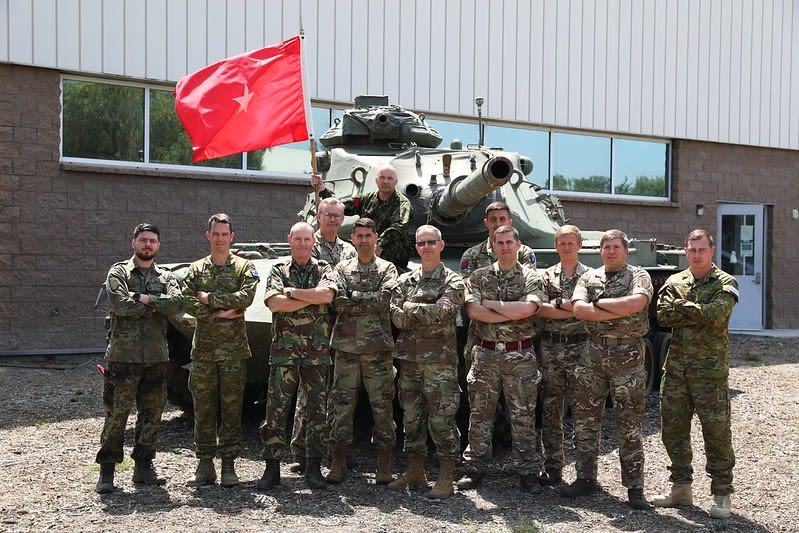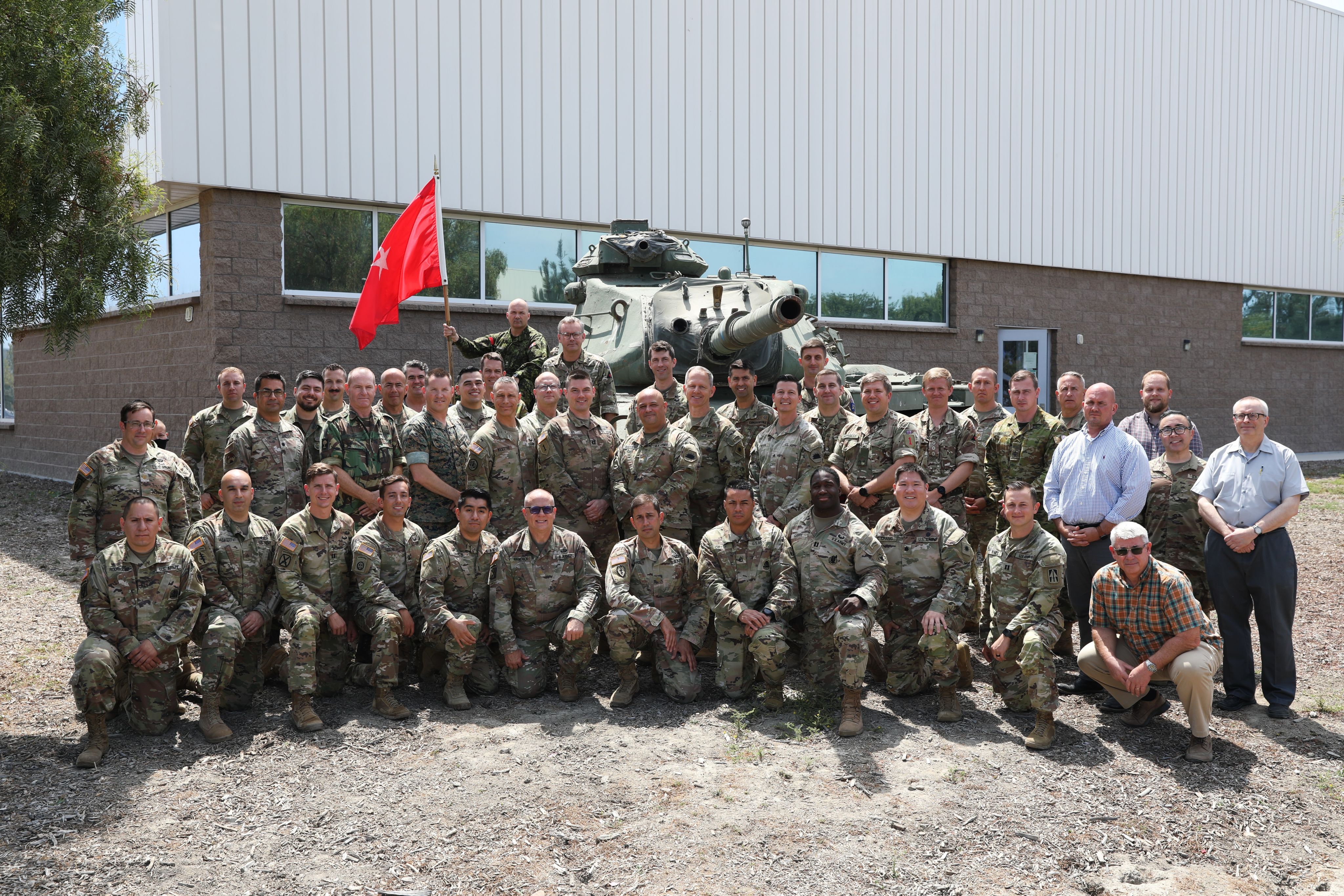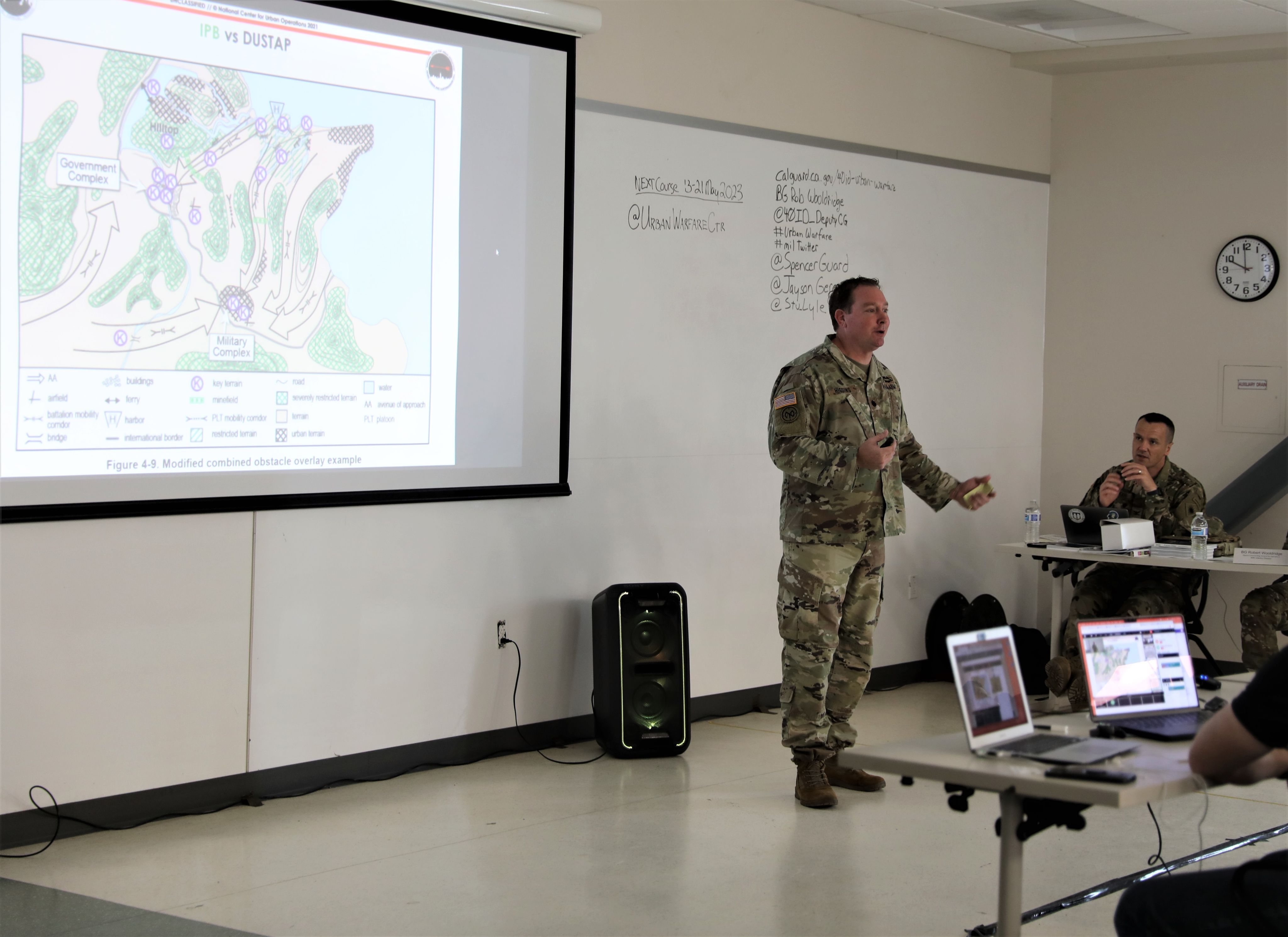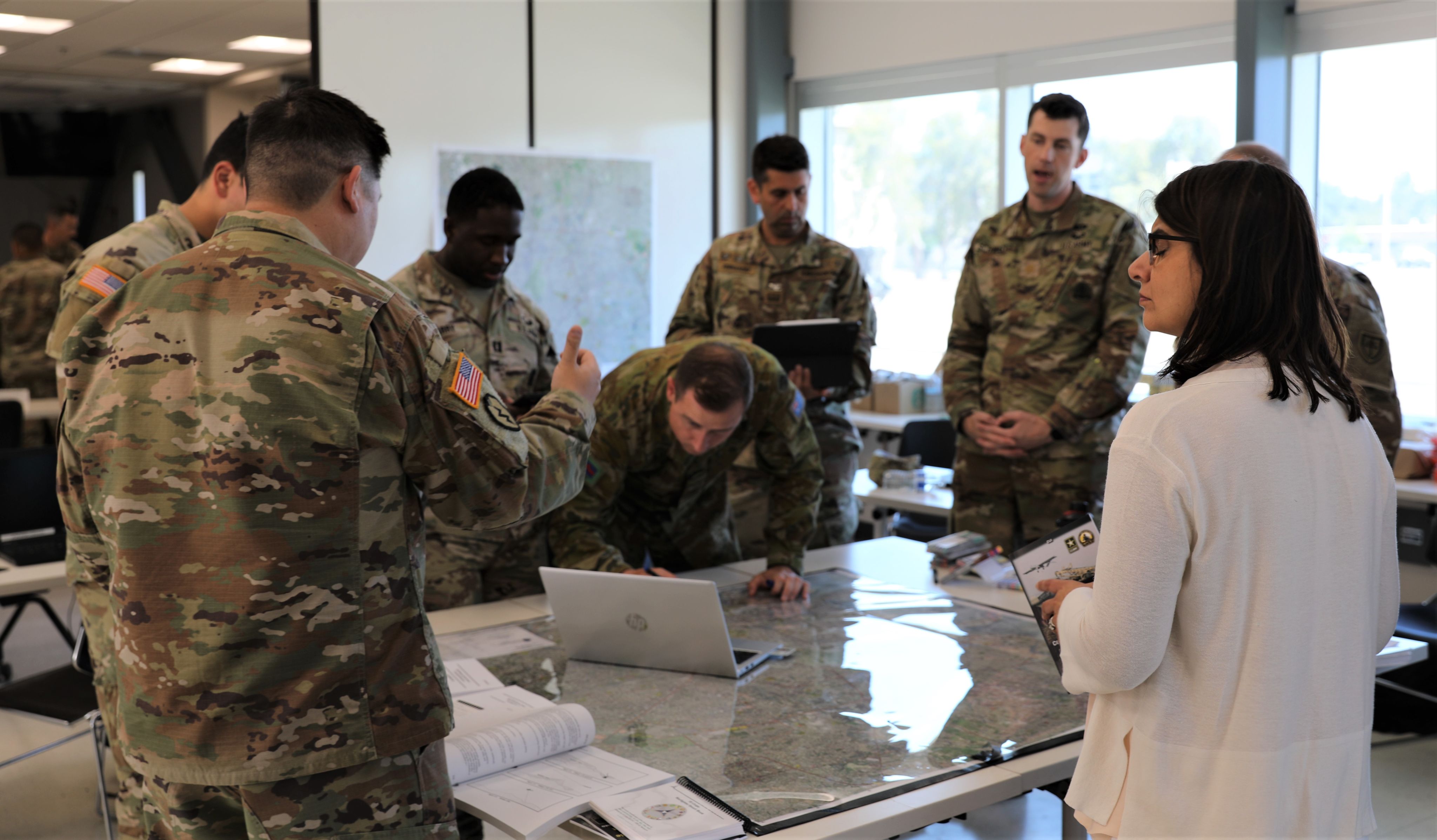Story & Video:
Urban: the 3-dimensional battleground
Evolving tactics now for the future fight
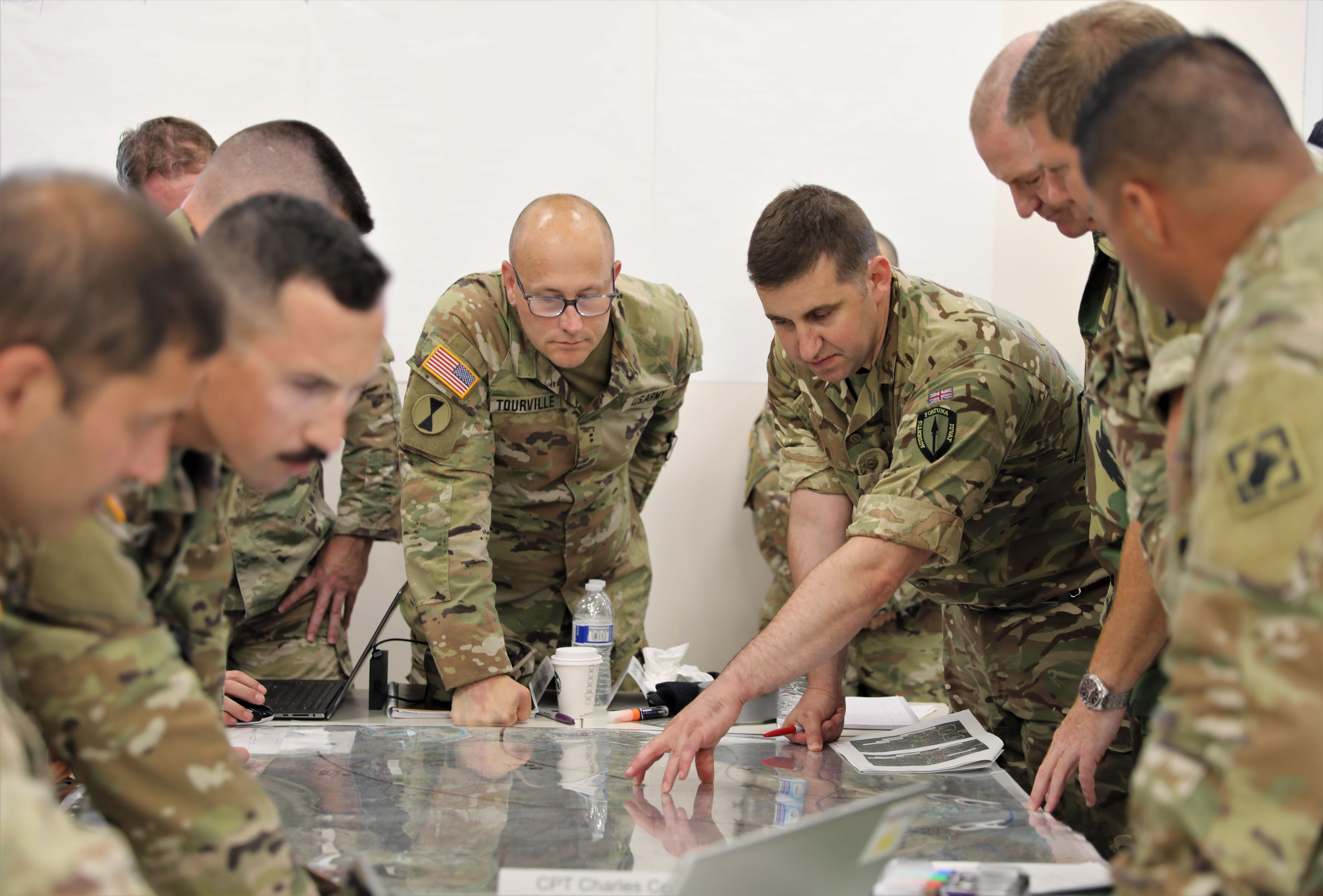
Story by Amanda H. Johnson
California National Guard Public Affairs
Video by Sgt. Jack Adamyck
40th Infantry Division Public Affairs
Aug. 1, 2022
LOS ALAMITOS, Calif.—A dust cloud whipped into the air as four UH-60 Black Hawks with the 40th Combat Aviation Brigade ascended from the airstrip at Joint Forces Training Base, Los Alamitos, on July 12, 2022. Inside the helicopters, military leaders from Canada, Germany, Australia, the United Kingdom, the Netherlands, and the United States cross-talked over their headsets about various buildings and structures as they flew over Los Angeles County.
It was a tour of the county, but not an entertainment-themed venture highlighting Hollywood or Disneyland. The points of interest being studied are strategic locations and avenues of approach if a military contingency had to battle an enemy on the streets below. Urban warfare.
“Urban warfare is the most complex terrain any nation can ask a military to accomplish political objectives,” said California State Guard Col. John Spencer, Chair of Urban Warfare Studies at the Modern War Institute, and instructor for the course. “It will put a military’s doctrine and capabilities or what they think they can do to the test.”
The hover transporting the group to the National Training Center at Fort Irwin, Calif., are the main attendees of the Urban Operations Planner Course, hosted by the Los Alamitos-based 40th Infantry Division.
It is the only course in the world designed to improve brigade and division planners’ knowledge, ability, and skills to plan major combat operations specifically in the dense urban terrain, said Spencer.
“When Russia invaded Ukraine in late February 2022, they were defeated by a much smaller Ukrainian force, because they did not understand the urban implications; people, infrastructure, and physical terrain, of their desired strategic goal,” said Spencer, a leader in Urban warfare for the past ten years.
The desired strategic goal was to remove the government of Ukraine in Kyiv. With a population of more than 2.9 million in 2021, Kyiv is the 7th most populous city in Europe.
“We’re not talking about fields in the middle of some province,” said U.S. Army Brig. Gen. Robert T. Wooldridge II, deputy commanding general-operations for the 40th Infantry Division. “We are measuring progress by cities. This is where the Ukrainians are effectively using the urban terrain to slow the Russians and make them pay for taking those yardsticks of progress.”
The cities of Kyiv, Kharkiv, Chernihiv and 25 other settlements have been taken back by Ukrainian forces as reported from Ukrainian Armed Forces. Donetsk, Mariupol, Luhansk, and other cities in the eastern portion of the country are still under heavy conflict.
Metropolitan areas of economic and industrial importance have become the measuring standard to mark the progress of success or failure. The population of these areas enduring the highest cost of war are the sites expected to grow the most in the decades to come.

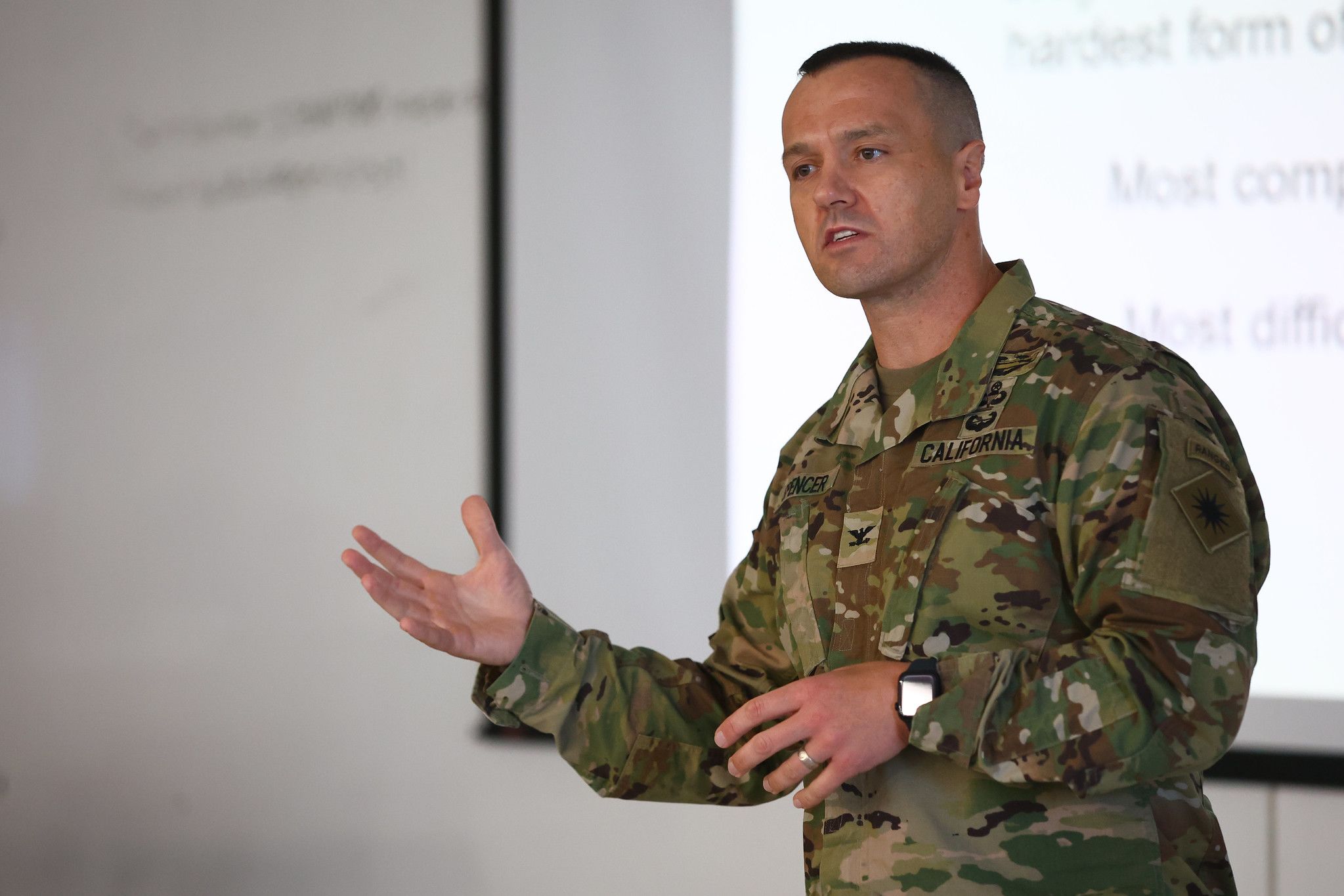
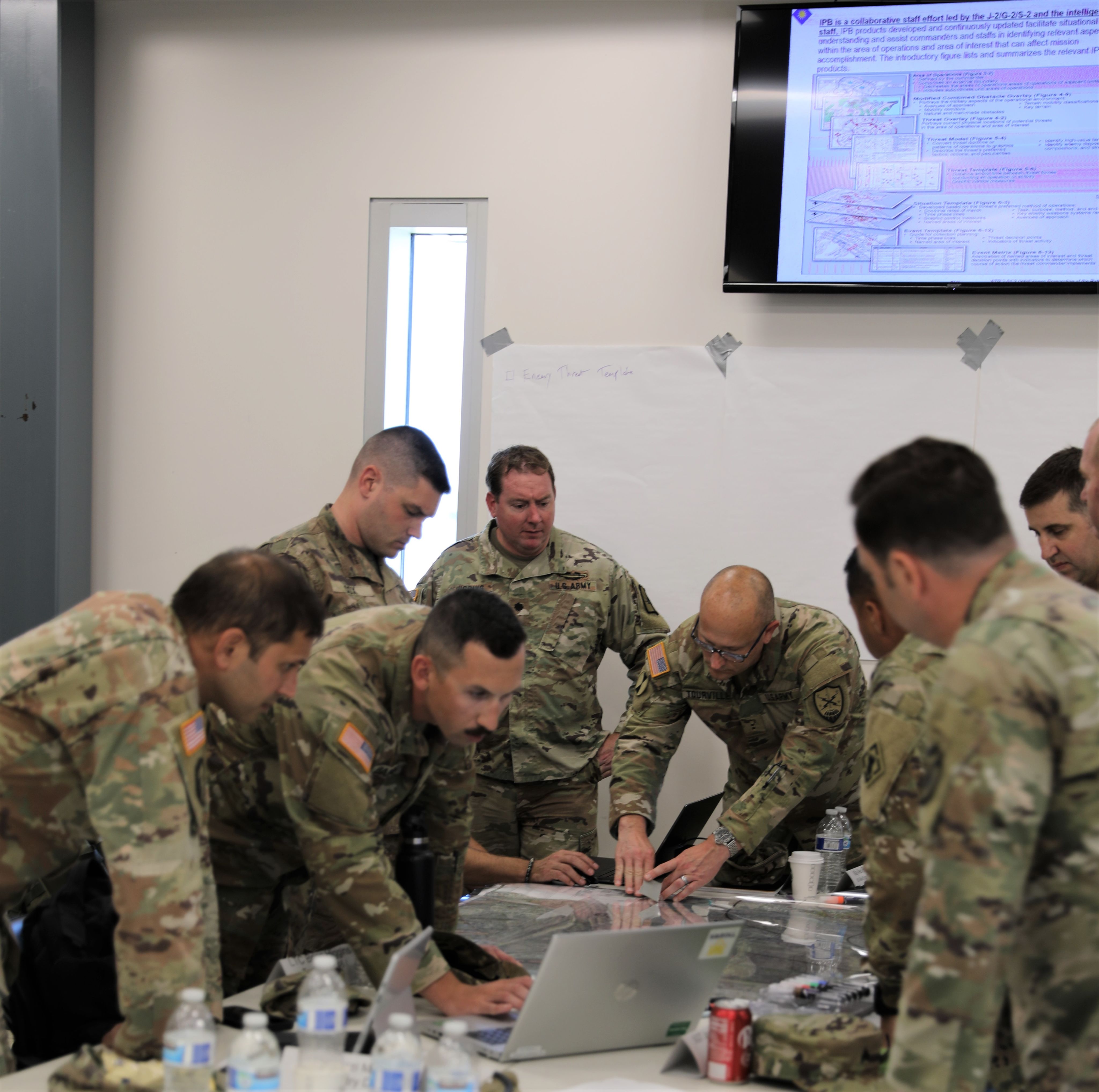
“Most of the population growth is urban,” said Wooldridge. “The world is already 55% urban and it’s expected to be over 2/3 urban by 2035.”
UOPC’s purpose tackles lessons learned to develop better strategies at operating in the most challenging operations environment of today, dense urban terrain. It specifically focuses on the large-scale ground combat or stability operations in this environment.
“Much has happened since our first UOPC eight months ago in October 2021,” said Wooldridge. “The Russian invasion of Ukraine in February gave us all a glimpse into our future fight. The world is realizing that most of the future fight will be fought in and over urban areas.”
The three-dimensional space of the urban area captures everything above ground such as multi-story buildings, multi-level underground spaces including car garages, the subterranean infrastructures like sewage and drainage systems, and dozens of other elements.
“The Russian invasion of Ukraine in February gave us all a glimpse into our future fight. The world is realizing that most of the future fight will be fought in and over urban areas.”
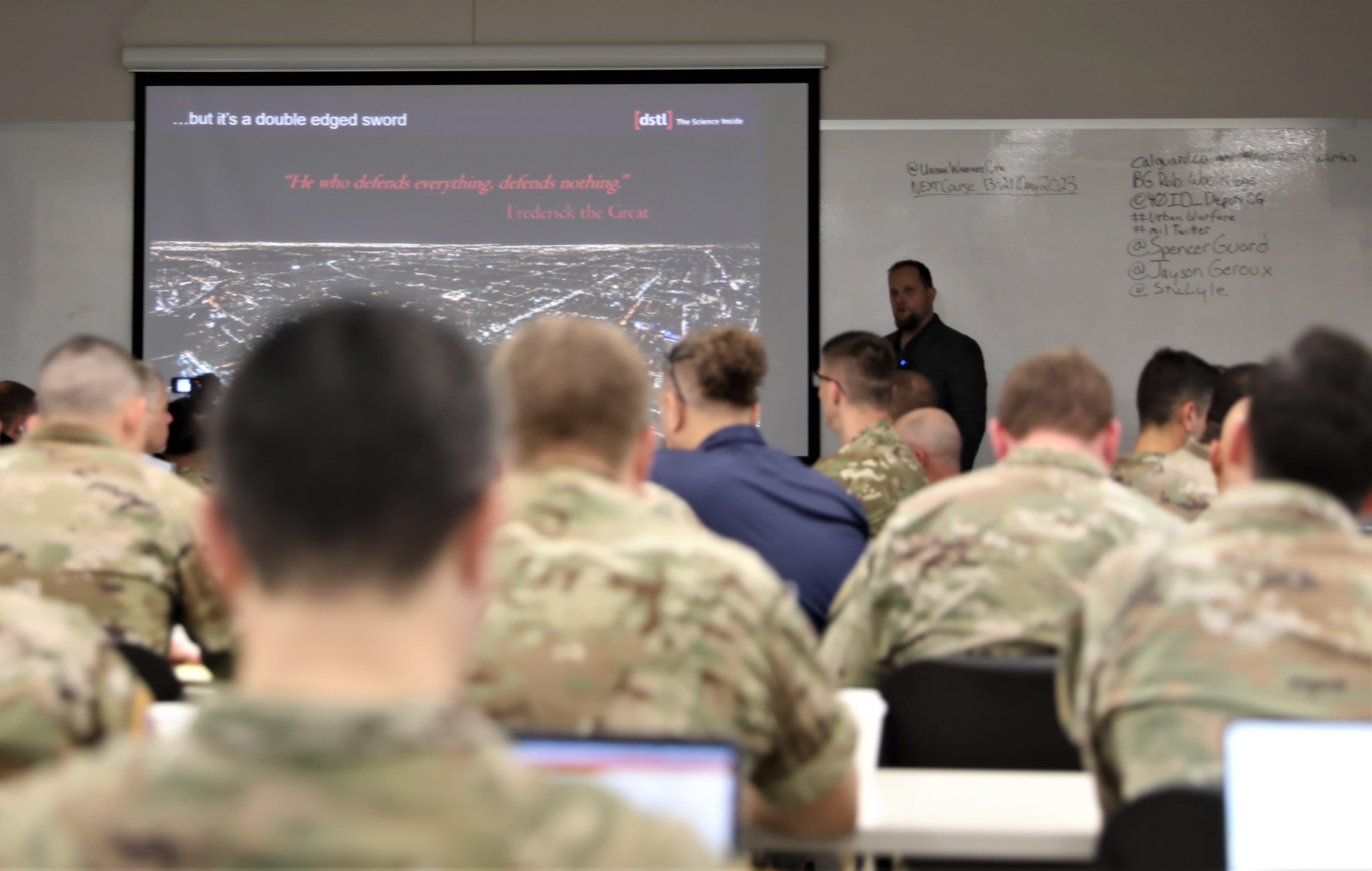
Economic landscapes, religious structures of worship or historical significance, hospitals, schools, apartment buildings, recreational parks and establishments, burial grounds, industrial spaces; a city is a battlefield that consists of many more complexities than the singular consideration of occupation.
“This course is about understanding the challenges and advantages of urban operations as well as giving planners the tools to dominate in the urban environment,” said Spencer.
In a video presented to the class made by the U.S. Army for the Pentagon’s Joint Special Operations University, “Megacities: Urban Future, the Emerging Complexity,” the challenges of Dense Urban Environments are countless.
Megacities are defined as very large cities typically consisting with a population over ten million people.
The film projected urban areas to grow by 1.4 billion by 2030, with that growth occurring mostly in the developing world. Cities will account for 60% of the world’s population, and 70% of the world’s GDP.
Megacities are complex systems where people and structures are compressed together in ways that divide both the current military understanding of city planning and military doctrine.
It is an ecosystem that demands a highly agile and adaptive force to successfully operate within. Infrastructures will vary radically with concentrations of high-tech transportation, globally connected air and seaports, contemporary water, utilities, and waste disposal intermixed with open landfills, overburdened sewers, polluted water, and makeshift power grids.
The advice from doctrine from Sun Tzu, a Chinese military strategist, to current field manuals has provided two fundamental options; avoid the cities or establish a cordon to either wait out the adversary or drain the swamp of non-combatants and engage the remaining adversaries in high-intensity conflict within.
Even the U.S. military’s counter-insurgency doctrine, refined and sharpened in the cities of Iraq and the mountains of Afghanistan is inadequate to address the sheer scale of population in the future urban reality, the film stated.
Future operations must allow military forces to rapidly return the city to the people. They will be too large and complex to isolate or cordon in their entirety. Yet militaries will have to operate within these ecosystems with minimal disruption and flow.
The current and past strategies can no longer hold. Military forces are facing environments that the masters of war never foresaw. The world is facing a threat that requires armies to redefine doctrine and the force in radically new and different ways, the film said.
For Wooldridge, the future threats are something he had already experienced on a smaller scale when he was deployed to Port-au-Prince, Haiti as a junior officer during Operation Uphold Democracy.
“As a second lieutenant, I was thrust into an urban area that I wasn’t prepared for and was a different environment,” said Wooldridge. The military intervention authorized by the United Nations Security Council in 1994 was in reaction to the 1991 Haitian military coup d’état that overthrew the elected President Jean-Bertrand Aristide, plunging Haiti into discord. “All the different considerations discussed in this course I learned the hard way.”
With just one unit training, experimenting, adapting, and modifying for large-scale combat operations in urban terrain, the army can gain information on requirements it doesn’t have today, said Spencer. This is the undertaking the 40th ID is working on for the Army through the UOPC.
Wooldridge quoted Anthony King, author of Urban Warfare, “Urban combat has become essential, maybe even the defining form of warfare in the 21st century. In the 20th century, armies prepared to fight in the field. Today, it seems all but inevitable they will fight in the cities.”
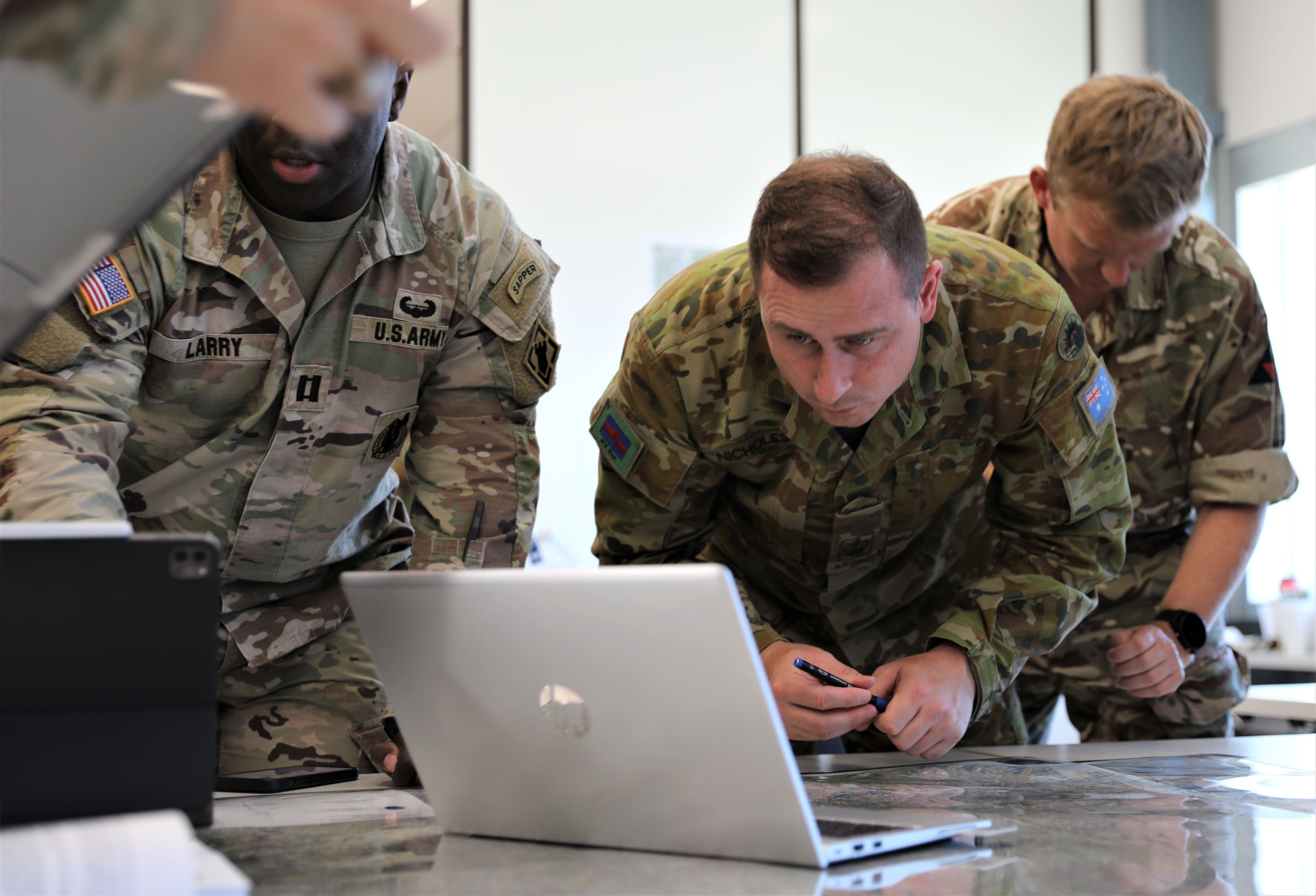
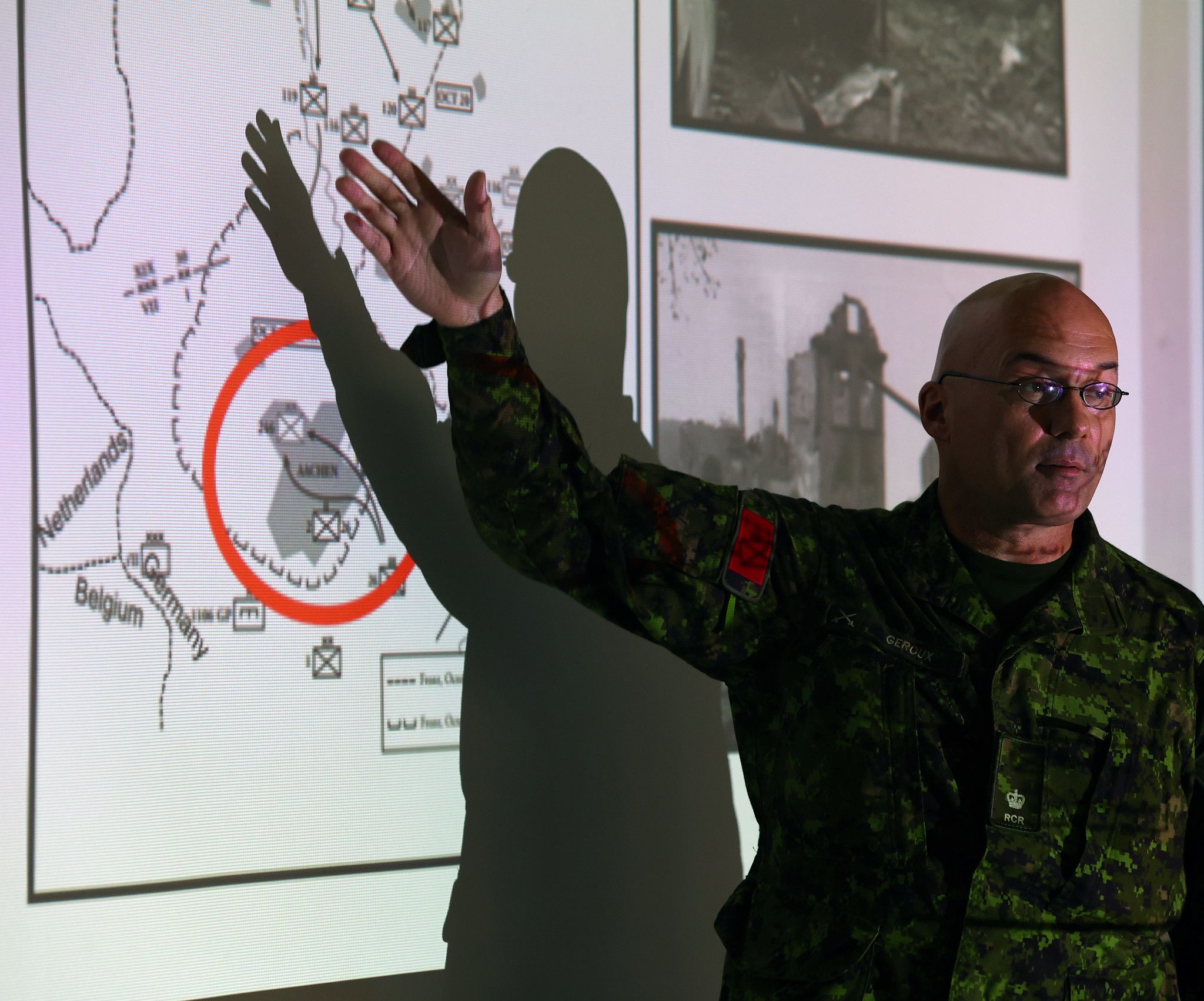
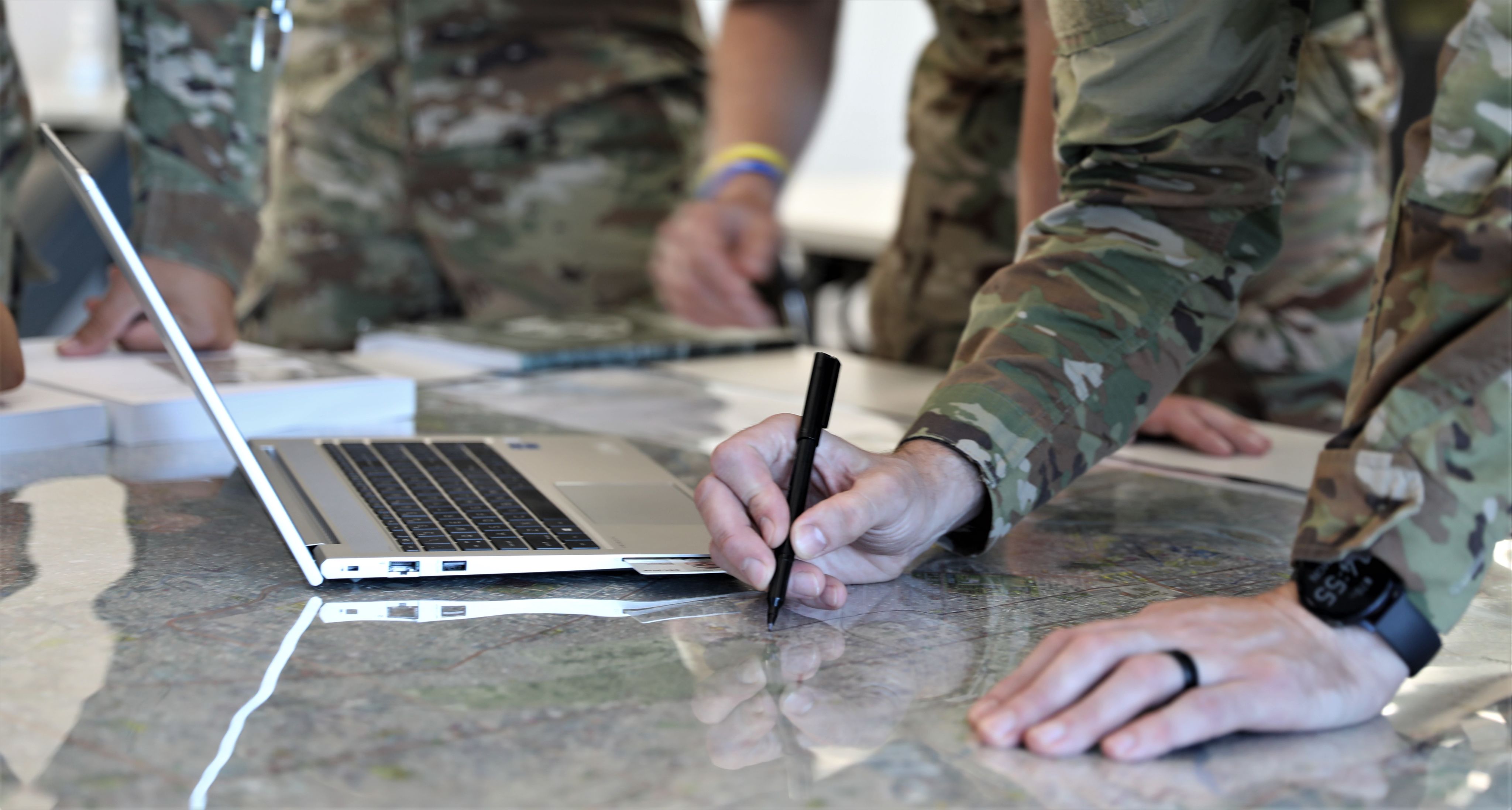
Laws of War
Laws of war govern military forces action on objectives in the amount of force that can be applied to civilians. The 1907 Hague Convention and the Geneva Conventions of August 12, 1949 sets the standards relating to the Protection of Victims of International and non-international armed conflicts.
Russian attack on Grozny 1999
The Russian military warned inhabitants that they would launch in all-out assault on the city of Grozny and requested all civilians leave before the start of the artillery bombardment to avoid violating the law of war.
“Urban combat has become essential, maybe even the defining form of warfare in the 21st century. In the 20th century, armies prepared to fight in the field. Today, it seems all but inevitable they will fight in the cities.”
